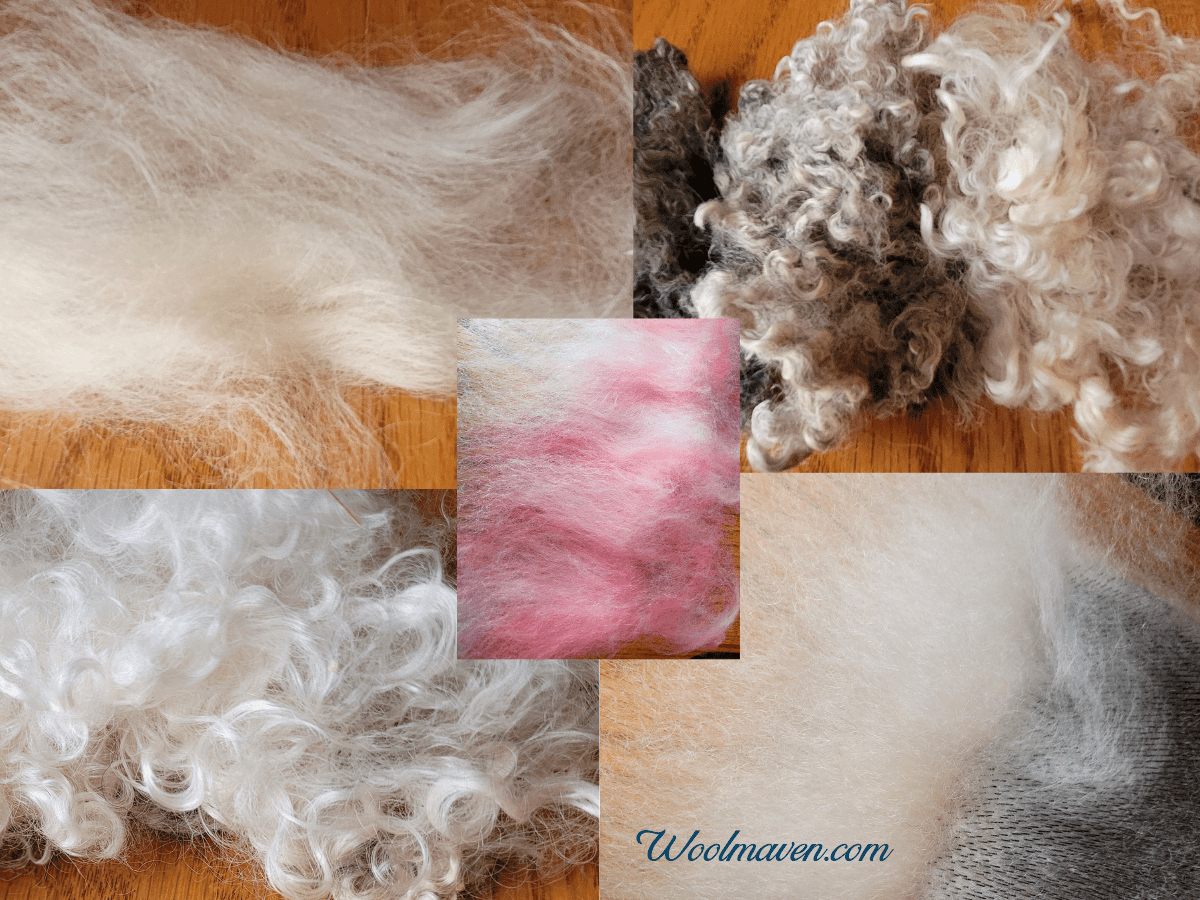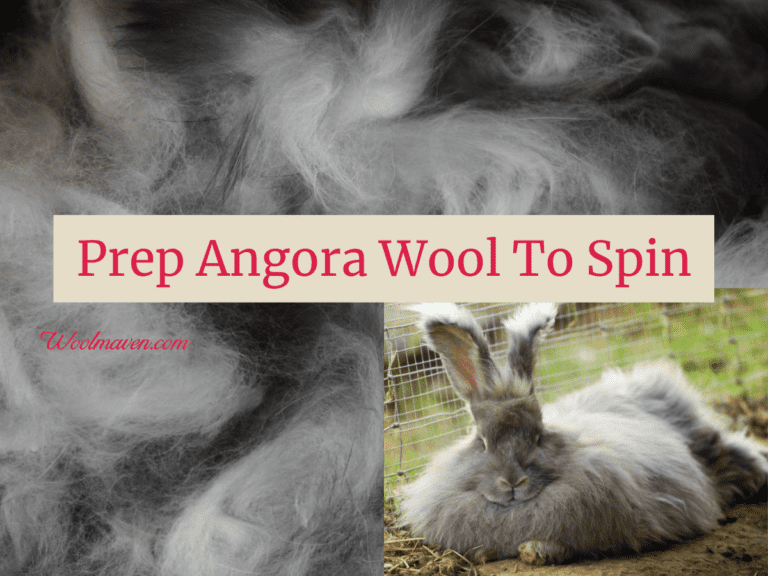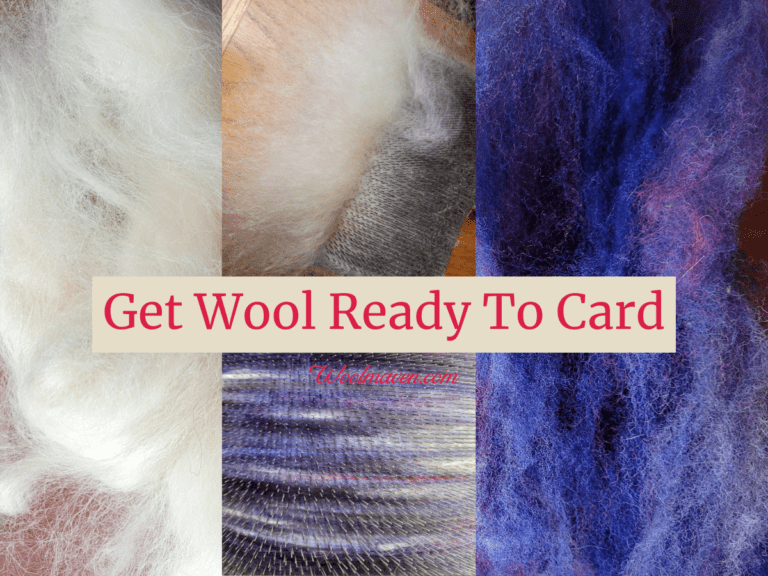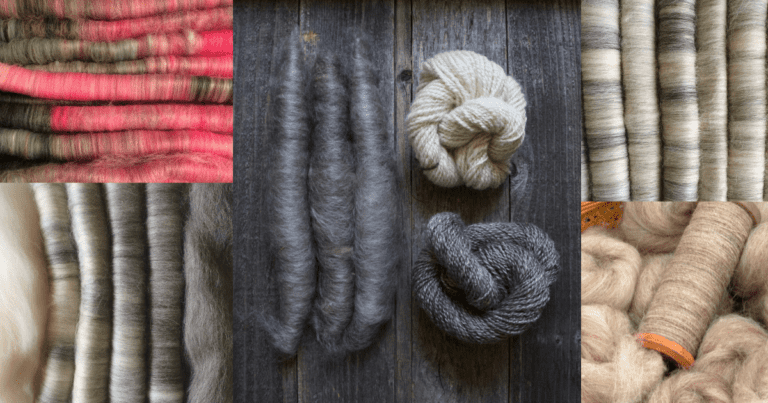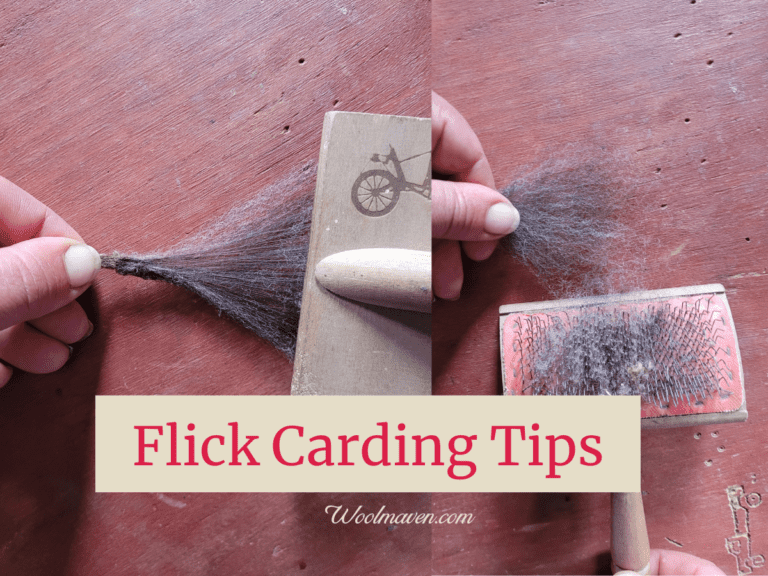How Do You Blend Mohair For Handspinning?
Blending mohair for handspinning opens up a world of creativity for your yarn and, if you can do it at home, you have unlimited blending options.
Can you blend mohair for handspinning at home and if so, how do you do it?
You can blend mohair for handspinning by carding or combing it. If you are blending all fibers of the same length and you want a smooth yarn, use wool combs to blend mohair. If the fiber lengths vary or you want a yarn with more body, use carders to blend the mohair.
Choosing Mohair For Handspinning goes over the things you need to know to get mohair that you will love working with!
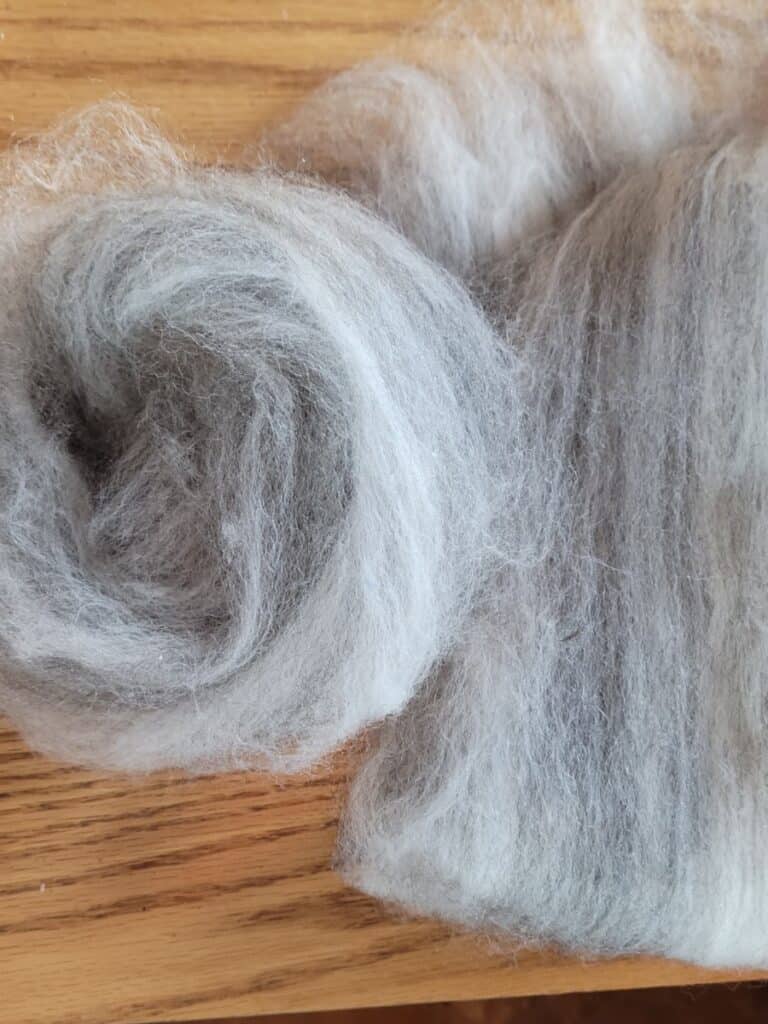
Prep mohair for blending
There are two different ways you could be blending mohair: using all mohair, just different colors or blending mohair with another fiber, like wool.
When blending mohair, you want the blending to be the only step you are doing at that time, any other fiber prep steps, if needed, should be done before this.
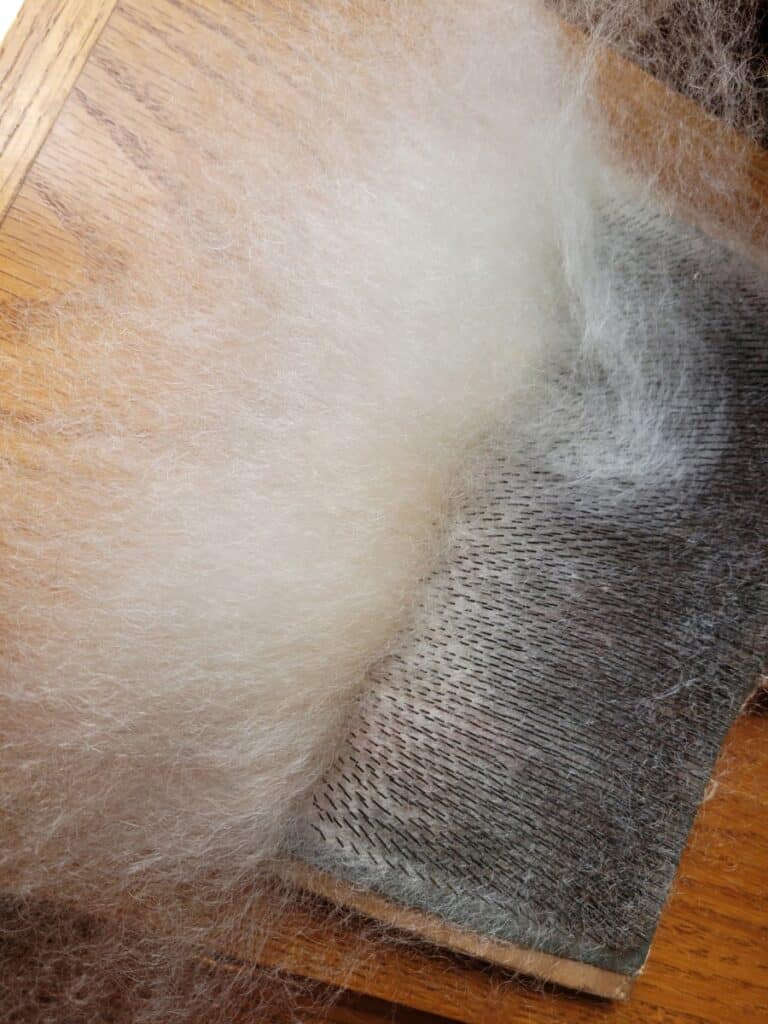
This post contains affiliate links, which means I receive commissions if you choose to purchase through links I provide (at no extra cost to you).
Blend mohair with another fiber
You need to prepare your mohair for blending, this means you need to have the mohair fibers separated out and spinnable, just like you were using the mohair by itself.
Most folks would start with washed mohair then comb or card the fibers until they are well separated then put them back on the cards or combs for blending.
Here is the comb set I recommend, available at The Woolery.
The hand cards that I use are Clemes & Clemes Curved Back Wool Cards. I’ve had them for almost 20 years and use them for all of my hand carding.
While you could blend un separated mohair, you run the risk of segregating out your fibers as you comb if the mohair is in lock form and the blending fiber is not.
For more specifics on combing and carding mohair, read my article Preparing Mohair For Handspinning.
Blend only mohair
If you are planning on blending mohair only, for instance blending different colors of mohair, then just make sure all of the mohair has the same preparation.
This means if some of the mohair is in locks and the rest is roving, comb the locks out first, then blend the two mohair colors together.
If both or all of your colors are in lock form, just stick them on the comb (or card) together in the proportions that you want them to be blended in.
Less is more with any fiber preparation, go slowly, take your time and do not overload the comb or card.
I tend to overload both combs and cards, so I have to remind myself to slow down!
Prep the blending fiber
If you are blending the mohair with a different fiber, like wool, make sure the wool is well separated out and in the same state of fiber separation as the mohair.
This means that if you are using mohair roving, you should heavily consider carding the wool first, before blending.
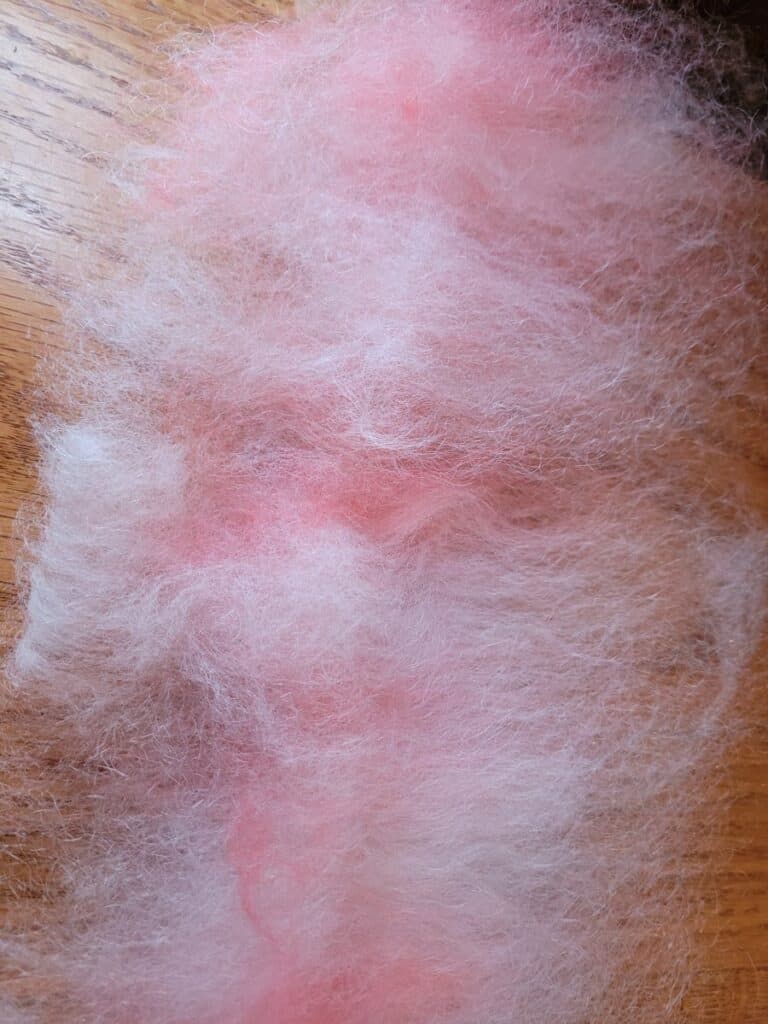
How to blend mohair with carders
Using cards to blend mohair is easy, as long as all of the fibers you are using are well separated out.
I used my trusty set of 72 tpi hand cards, they worked great to blend the mohair and wool.
You just put the fibers you want to use on the cards in a light layer and card. Less is more here, you are shooting for a good blend.
I like to alternate if I have colors or go with layers if I have two different materials, so one layer of mohair and one layer of wool.
Actually, what I did was card the mohair locks then add some wool on top, so it was a two step process.
You can put the carded mohair back on the cards, of course, but it seems easier for me to just add the wool after carding out the locks of mohair.
Blending wool and mohair, I was using about 50/50, not weighed just guesstimating, and it took three passes to get it well blended.
If you are not sure about your blending, go with a colored fiber and a white fiber, then you can tell by looking if the fibers are well blended or not.
If you look closely at the card, you can see if the wool and mohair are well blended, even if they are both white, but it’s easier when one is colored.
I also tried out a mohair and Polwarth blend on my drum carder, it’s wonderful! The batt is lovely and it’s super easy to spin with. Nice!
If you don’t have a drum carder yet, consider getting one! I love my drum carder and have been able to do tons more blending work since I got it. Sincerely, get one, you’ll be glad you did!
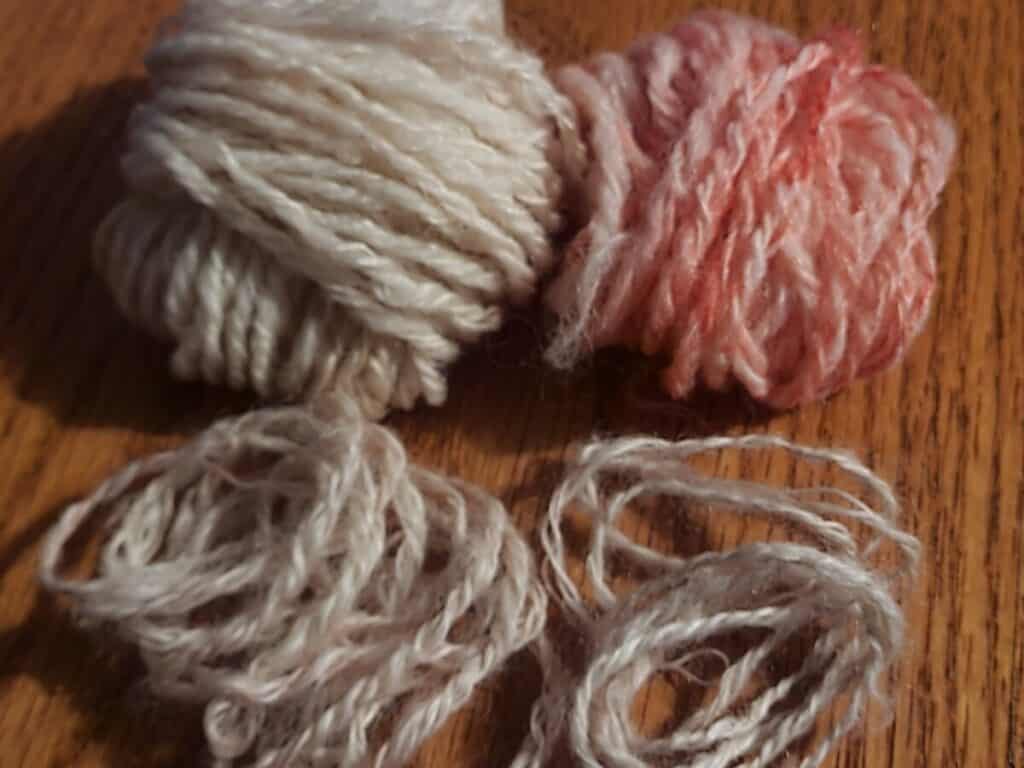
How to blend mohair with combs
Blending with combs is going to be done the same way as with cards, with the additional need to make sure that the fibers you are using are the same length.
The reason you need the fibers to be the same length is that when you take the blended fibers off of the comb, they stay blended.
When removing fiber off of a comb, the long ones come off first, which will separate out the fibers if they vary substantially in length.
Maybe a gradient is what you are looking for, then go for it!
If you want to keep the fibers blended, start with fibers of the same length, whether you are using all mohair or blending with another fiber.
You can comb out locks of differing colors of mohair or comb mohair roving with a wool roving, but, at least for the first few tries, make sure both are the same, either roving or locks.
This wool comb set looks the most beginner friendly to me, and, as a bonus, they come with a holder. I purchased a different set, which are fine, but if I had it to do over again, I’d get these instead.
Blend mohair on a hackle
Another option for blending mohair is to put it on a hackle. This would work well for already prepared fibers, not locks.
You could use the hackle to blend roving with other mohair roving, for instance different colors, or other wool roving, to make a mohair and wool blend.
The difference between using the hackle and using the cards to blend mohair with wool would be the fluffiness of the fiber you end up working with.
The hackle blended is going to be a top (smooth and compact) while the carded blend will have more loft to the resulting yarn simply due to the alignment of the fibers in the roving.
Mohair USA.com had an easy to understand chart with the classifications of mohair, including lengths and micron counts, which will help you pick mohair that you’ll love to use!

